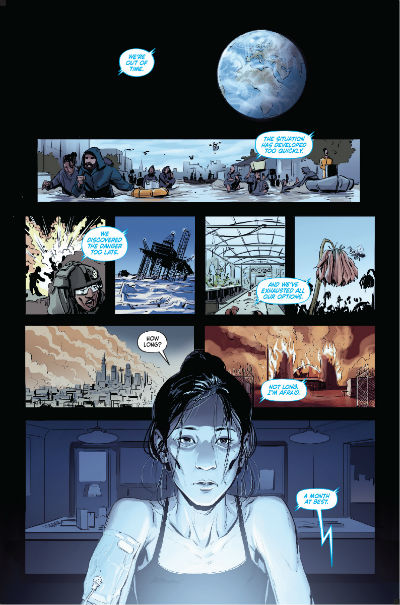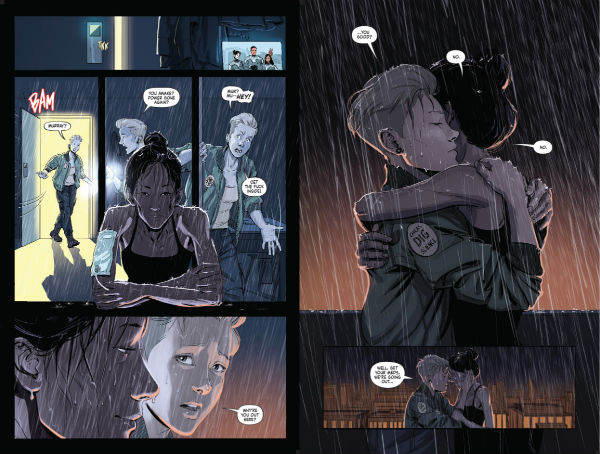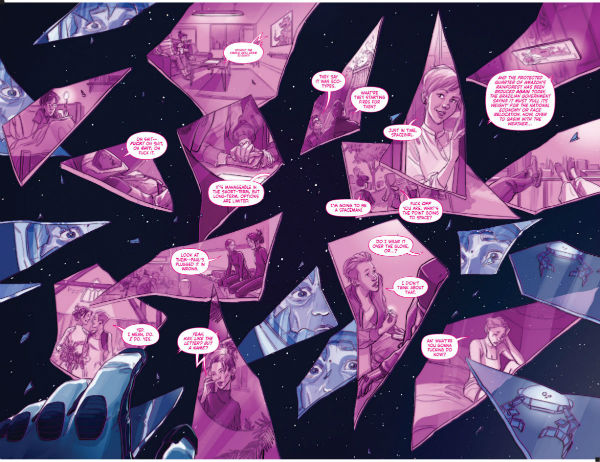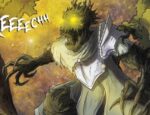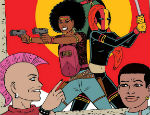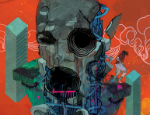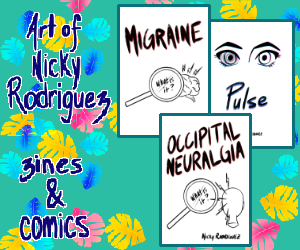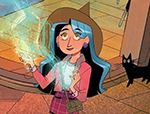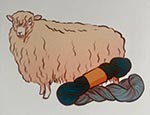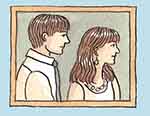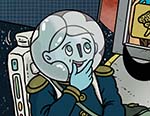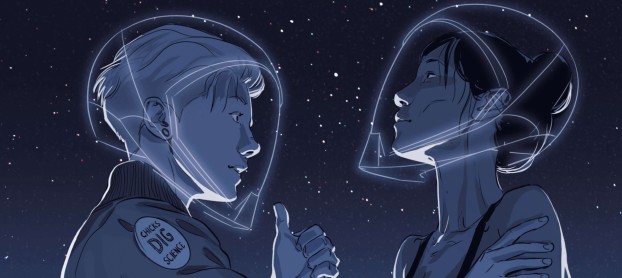
It would be very easy when talking about Tom Woodman and Rupert Smissen’s graphic novel Future to prioritise describing it in terms of its complex and inventive science fiction elements. Indeed, Future’s narrative is propelled ever onwards by some of the cleverest and strangely logical uses of time paradoxes you’ll encounter in a graphic novel. But while those chronology-warping elements form the environment the characters act within the true driving force of this book is a far simpler and familiar one – love and the devotion it inspires.
The book is set in a near future where central characters Kay and Murray are faced with a stark choice. Murray, an astronaut, is terminally ill and her days are numbered. She and her wife Kay are given the opportunity to take part in an experimental process that will allow them to be projected into the future where a cure for Murray’s condition may exist. The main focus of this unlikely mission though is the far grander aim of saving the entire planet. Earth is on the precipice of catastrophe thanks to humanity’s self-destructive ways and this foray into the future may be key to preventing that. But what the couple discover when they re-emerge is a devastated Earth and the chilling realisation they are the last two people in the universe…
Future is one of those books where discussing the intimate twists and turns the plot takes as it progresses is to rob the reader of discoveries that are theirs to make for themselves but Woodman’s beautifully crafted two-hander is a powerful character study about love and the sacrifices we are prepared to make for those we care about. In that regard the timey-wimey developments are hardly incidental to proceedings but they act more as the canvas on which this delicately framed love story is painted.
Rupert Smissen’s art here is very different to my previous (admittedly limited) exposures to his practice, primarily I think in the pages of much-missed artzine Tiny Pencil. It’s here in the visuals that the symbiotic alchemy of this creative partnership comes to the fore. Smissen is so adept at communicating the nuances of Kay and Murray’s relationship through their body language, reactions to each other and the subtleties of their expressions. And Woodman is canny enough to know when to step back from narration and/or dialogue and let the images speak for themselves.
Colour plays a vital role in establishing mood or accentuating theme in the pages of Future. It emphasise the feelings of claustrophobia in space, the barrenness of the Earth post-humanity, and its enhances the feelings of wistful nostalgia in key flashback sequences. While much of Future adopts more traditional panel-to-panel storytelling that only makes the freeform, experimental sequences stand out all the more. Murray falling through her own past for example, or literal shards of fractured memory drifting across the page.
The third player in this perfectly constructed tale is Aditya Bidikar, a letterer who is at the absolute top of his game right now. As ever that intuitive placement of speech balloons in the text-heavier sections is crucial but there are so many neat lettering tricks that add layers to scenes, from overlapping balloons to denote characters speaking over background noise, to specific balloon formats to signify artificial or recorded voices, through to coloured text to underline the past impinging on the present/future.
I don’t tend to cover much in the way of genre work at Broken Frontier, preferring to focus on alt and experimental comics and leaving my teammates to write about those other areas. But books of the quality of Future are projects that I will always make an exception for. This is a profoundly affecting story that, in a relatively short space, makes us invest in and care about its leads to such a degree that it would take a hard heart indeed not be moved by its deeply emotional final pages. An impressive statement of publishing intent from Cast Iron Books to open their publishing catalogue.
Tom Woodman (W), Rupert Smissen (A), Aditya Bidikar (L) • Cast Iron Books, £15.99
Review by Andy Oliver





